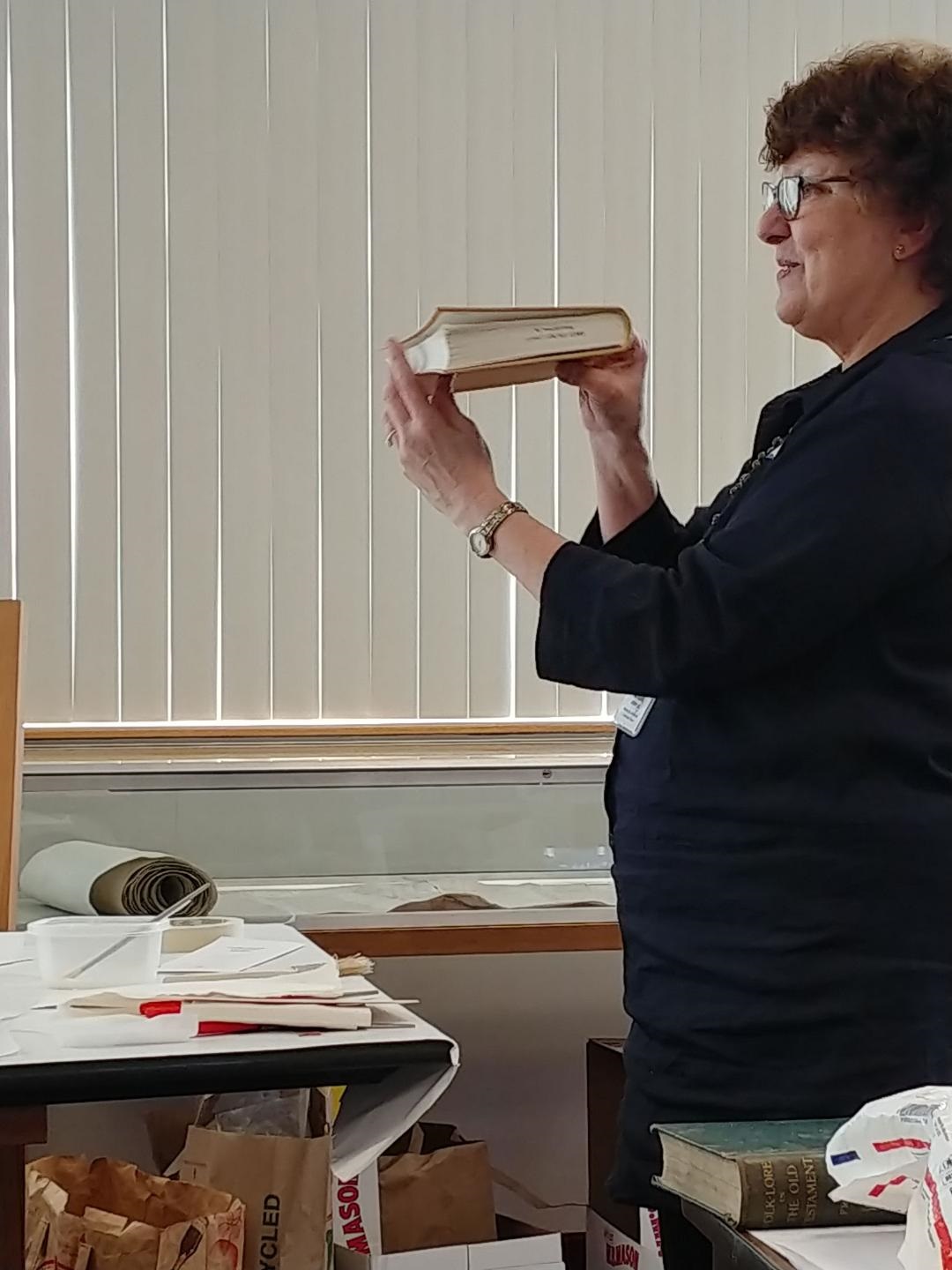Staff Knowledge of Book Repair Techniques Still Vital to the Libraries
April 30, 2018
On January 9 – 10, 2018, Daniel McCann and Lydia Smith—members of the Drexel Libraries’ Print Resources Access Management team—attended a two-day book repair workshop hosted by Gratz College and the Tri-State College Library Cooperative.
The workshop was designed to teach library employees different methods for performing quality and permanent repairs to print items. The workshop included sessions on repairing torn pages, replacing a broken spine and building a new hardback cover from scratch. During the sessions, attendees got hands-on experience using various adhesives, paper and textile supplies, and tools needed to complete the different repairs. Attendees left the workshop with a variety of sample tools and supplies, as well as a newly-covered book and a brick wrapped in book cloth to be used as a weight to aid in the repair process. Nancy Nitzberg, Director of Library Services for Gratz College, demonstrates how to repair a book during the book repair workshop in January.
Nancy Nitzberg, Director of Library Services for Gratz College, demonstrates how to repair a book during the book repair workshop in January.
The workshop was an opportunity to learn about when and why to repair an item, not simply how to repair one. Learning about the process and the “language” of book binding offers a better understanding of the repair process itself. Typically, most repairs performed by Drexel Libraries staff are simple and involve tape and some adhesive, while larger jobs, like rebinding jobs, are outsourced. However, even when working on smaller jobs like taping a broken spine, understanding the purpose of the spine and how it holds a book together allows you to perform a more effective fix.
What’s more, even though the majority of funding “acquisitions” nowadays is spent on electronic resources, the physical collection is still a large and important part of the Drexel Libraries’ collection—as well as the most visible to clients—and it is important to preserve print items for the future. Some items are simply not available in electronic format, and it is important that some libraries maintain these items in print. In other cases, print is the preferred format for many clients, particularly items containing images. Furthermore, replacing a damaged item outright is often cost-prohibitive, and making quick and effective repairs is vital to keeping print items available for client use.
Currently, the Print Resources Access Management team is reviewing its procedure for handling and repairing damaged items found in the Libraries, with the goal of decreasing the time it takes to fix or replace an item. Expanding staff members’ knowledge in this area will allow the team to make decisions about if and how to repair an item faster so resources are withdrawn from circulation for as little time as possible, thus ensuring that members of the Drexel community have access to the resources they need for courses and research.